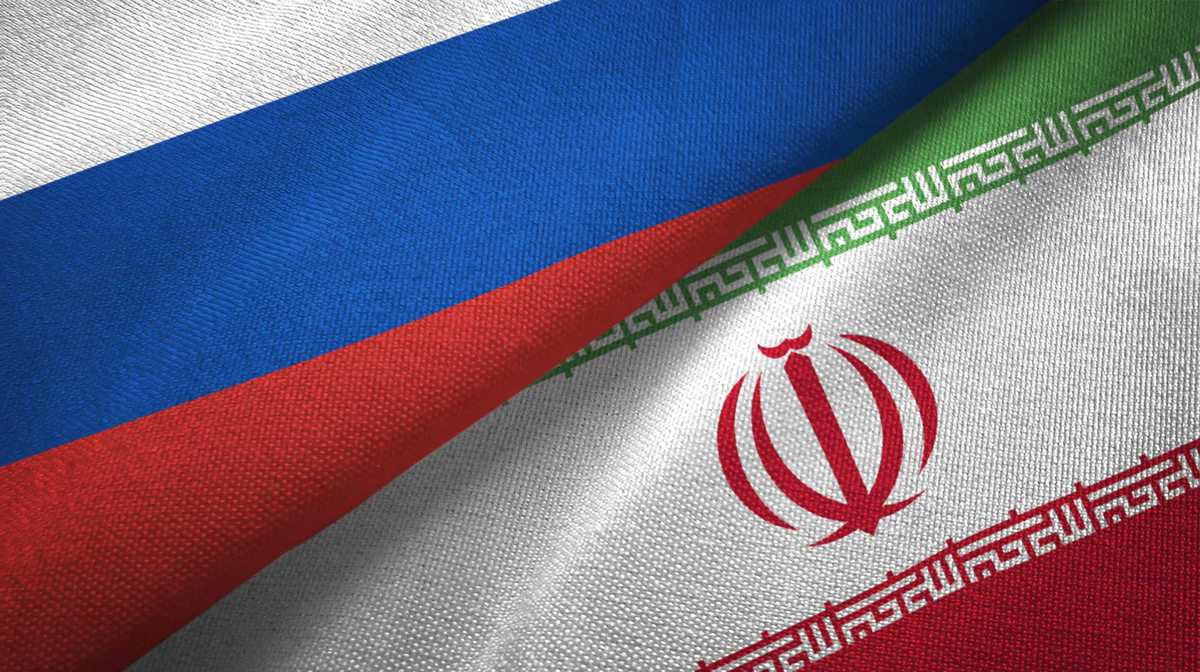Is the Iranian-Russian alliance in Syria waning?

Russia and Iran flags together relations textile cloth, fabric texture
Originally published by The Jerusalem Post
It is in Moscow’s best interest to secure an ally in the Middle East to assert its status as a global superpower.
Russia’s role in reviving Syrian President Bashar Assad’s authority within the country’s official institutions, including its military, is complicated by Hezbollah’s presence.
On March 14, a delegation from the Hezbollah bloc in Lebanon arrived in Moscow to initiate a four-day visit, marking the movement’s second official trip to Russia. According to Russian news outlets, the Hezbollah delegation steered the discussion to discern Moscow’s position on the Assad regime and the ongoing Syrian civil war. Hezbollah claims the issue of Syria was not reviewed and emphasized that discussions centered on Lebanon’s domestic political crisis. The truth may be somewhere in the middle.
The onset of the delegation took place on the eve of the 10-year anniversary of the gruesome Syrian civil war. The last 10 years of atrocities was catalyzed on March 15, 2011, when Syrian citizens took to the streets to demonstrate against the Assad regime, as part of the larger Arab Spring movement that swept the Middle East. The stalemate the ensued the first few years of the conflict created a power vacuum in the country, which was complicated by the rise of ISIS and their sweeping territorial claims in 2014. The terror group’s increasing hold on the country prompted the arrival a US-led intervention aimed to protect civilians. By late 2015, the coalition recruited, trained and organized thousands of Syrian Kurdish and Arab fighters, who would become the Syrian Democratic Forces.
As the US-backed SDF gained momentum by pushing ISIS out of many of its strongholds, the Assad regime was ailing. Hezbollah, Iran’s Lebanese based terror proxy, envisioned a unique opportunity. The Shi’ite militia intervened in the Syria conflict earlier in 2012 to exploit their relationship with the Assad regime. The group was able to pursue political aspirations in Damascus, including opening a front in the Golan Heights to target Israel.
When Hezbollah witnessed the Assad regime failing, it turned to Russia for help. Top Islamic Revolutionary Guard Corps general Qassem Soleimani (later to be killed by a 2020 US-drone strike in Iraq) visited Moscow in 2015 to present his plan on preserving the Assad regime. From this point on, Russian-Iranian collaboration would permanently reshape the outlook of the Syrian war. Russian airpower combined with Hezbollah-linked fighters ultimately determined the defeat of opposition groups and was successful in containing ISIS. However, Russia’s role in reviving Assad’s authority within Syria’s official institutions, including its military, is complicated by Hezbollah’s presence.
Hezbollah initially entered the Syrian conflict with a duel agenda. Iran needed to support its ally, the Assad regime, in order to gain a stronger foothold in the region. While Hezbollah helped cultivate and organize local fighters within the Syrian military to aid Assad’s regime, it simultaneously built up an autonomous armed force. This strategy has been employed by Tehran across the Middle East. Iranian-backed militias function independently of state institutions in Iraq, Yemen and Lebanon – causing domestic strife and political turmoil.
While Iran strides to preserve an independent militia on the ground in Syria to more easily confront Saudi Arabia, Israel and US interests in the region, Russia has a separate agenda. It is in Moscow’s best interest to secure an ally in the Middle East to assert its status as a global superpower. Since Hezbollah’s rogue actions on the ground in Syria prevent the government from stabilizing, Russia will likely aim to reduce Iran’s influence in the country.
- US Stands Up New Drone Strike Force in the Middle East - December 9, 2025
- Has Russia Finally Sold its Su-35s to Iran? - December 2, 2025
- Iran’s Growing Missile Arsenal Is a Challenge for Israel - November 18, 2025
